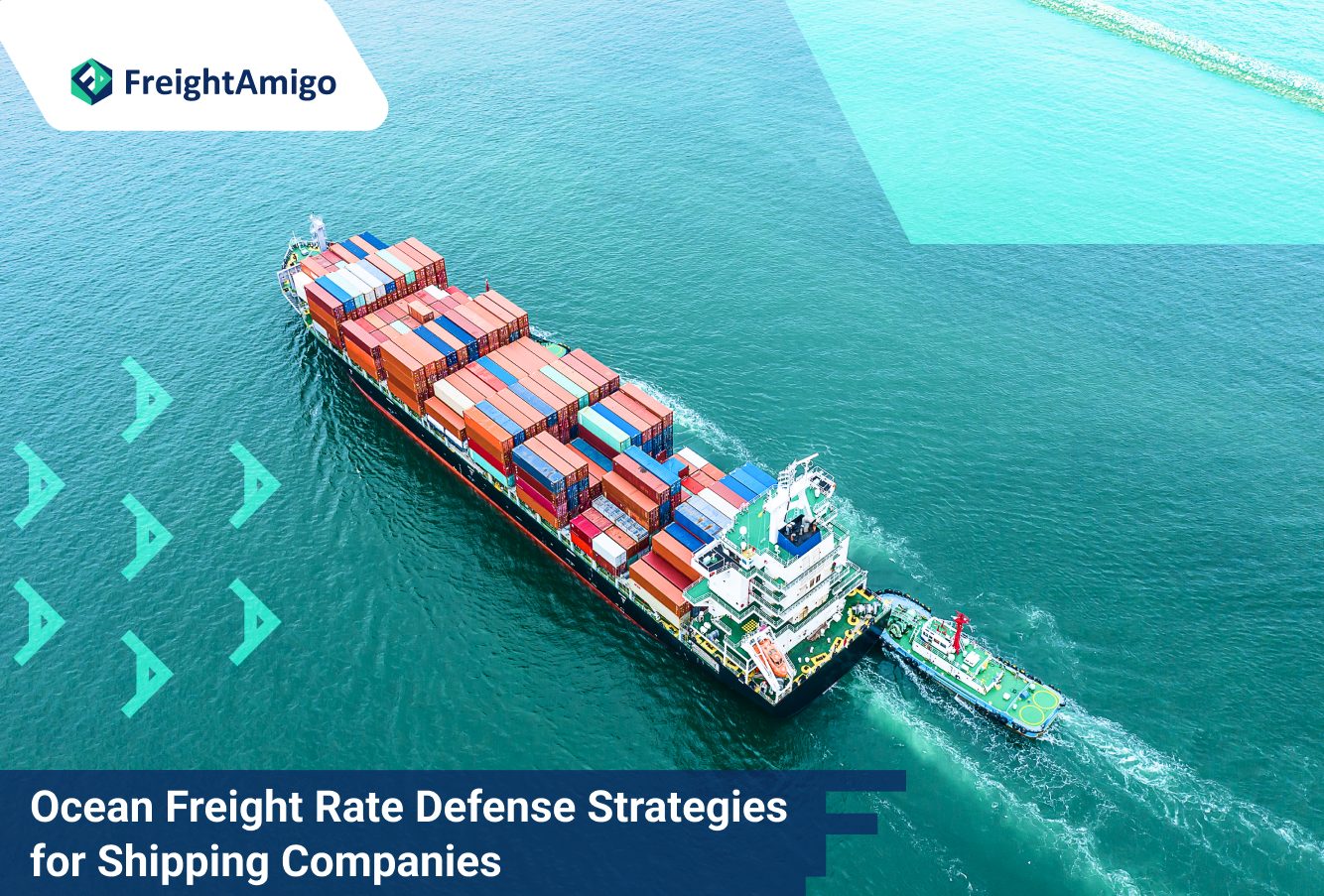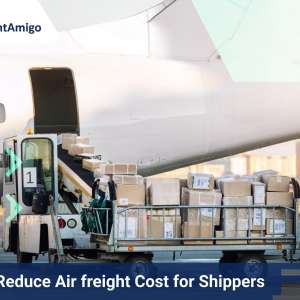Ocean Freight Rate Defense Strategies for Shipping Companies
Latest update on 20 March, 2024 by Aurora Park– Marketing Analyst at FreightAmigo
Ocean freight is a cost-effective and reliable mode of transportation for international shipping. The shipping industry is struggling to maintain freight rates due to falling demand and overcapacity. To address these challenges, shipping lines are implementing various strategies to defend rates and stabilize the market. FreightAmigo has written an article that explores the strategies employed by ocean carriers to protect and stabilize ocean freight rates amidst the challenges of falling demand and overcapacity in the shipping industry.
Want To Compare The Best Express, Air Freight, Sea Freight, Rail Freight & Trucking Rates So As To Have Better Control On Cost?
Slow Steaming: Reducing Supply and Costs
Shipping lines have adopted an effective strategy known as slow steaming. This involves intentionally sailing container ships at lower speeds to decrease the supply of vessel capacity on trade lanes. By reducing sailing speeds, fewer voyages are made over a fixed period, resulting in tighter capacity.
Industry data shows that the average speed of container ships this year was 13.88 knots, the lowest on record since tracking began in 2008. Last year’s speed of 14.29 knots decreased by about 3%, and there was a 4% decline from 14.49 knots in 2021, when freight rates were particularly high. The current speed is also approximately 3.5% lower than the pre-pandemic 2019 rate of 14.36 knots.
Slow steaming not only reduces capacity but also offers cost-saving opportunities. Slowing down a container ship by one knot can reduce fuel consumption by as much as 10%. Shipping companies must consider customer needs and market conditions when implementing slow steaming. This is crucial because increased transit time may impact customer satisfaction.
General Rate Increases (GRIs): Offsetting Rising Costs
Shipping lines often use General Rate Increases (GRIs) to increase fares periodically on specific dates when they deem it necessary due to factors such as supply and demand imbalances or market changes.
GRIs serve multiple purposes for shipping lines, including offsetting rising costs such as fuel costs, labor costs, and port charges. GRIs aim to improve profitability by addressing challenges during oversupply periods when freight rates are low. Increasing fares can stabilize revenue and mitigate rising operating costs. Shipping lines can enhance competitiveness by adjusting freight rates based on market changes.
It is important to note that GRIs do not always guarantee success. For example, a GRI applied in May on the U.S. West Coast and East Coast routes did not result in fare increases. However, fares increased in June but then decreased again. Shipping lines must carefully evaluate market reactions, customer satisfaction, and long-term business strategies when implementing GRIs.
Adjusting Vessel Capacity and Routes: Finding Balance
Shipping lines often adjust vessel capacity and routes to stabilize freight rates and reduce costs. Major carriers have significantly reduced their vessel capacity on North American routes in recent years. For example, MSC reduced capacity by 35%, Maersk by 19%, HMM by 25%, and COSCO by 7%. This reduction has led to a 23.3% year-on-year decrease in weekly supply on the North American route in June.
Carriers have chosen to use the Cape of Good Hope in South Africa instead of the Suez Canal on the Europe-Asia route due to the steady increase in Suez Canal tolls over the past year and declining volumes. This decision saves carriers approximately $1 billion per year, including additional fuel costs.
Introducing and Adjusting Surcharges: Balancing Supply and Demand
Freight rate defense strategies rely heavily on surcharges. Shipping lines use surcharges to address industry-specific challenges.
The Container Imbalance Charge (CIC) is an example of such a surcharge. It helps balance the supply and demand of empty containers between import and export destinations. By efficiently responding to container supply and demand, the CIC mitigates imbalances and ensures smoother operations.
The Bunker Adjustment Factor (BAF) is a surcharge that carriers use to respond to fluctuating global oil prices. This surcharge helps carriers adjust their fuel costs accordingly and mitigate the impact of volatile oil prices. Shipping lines can navigate the instability of oil prices and maintain stability in freight rates by effectively managing fuel costs.
Shipping companies also face the challenge of exchange rate instability. Many companies have introduced the Currency Adjustment Factor (CAF) to minimize the risk of exchange rate fluctuations. This surcharge helps mitigate the exchange rate risk of international payments and ensures financial stability for shipping lines.
Conclusion
In an oversupplied market with falling freight rates, ocean carriers use various strategies to defend rates and stabilize the industry. These strategies include slow steaming, general rate increases, capacity and route adjustments, and surcharge mechanisms. However, determining the most effective freight rate defense plan requires careful evaluation of market conditions, customer requirements, and long-term competitiveness. FreightAmigo can assist shipping companies in navigating these complexities and developing strategic planning and execution strategies to weather market storms and maintain profitability. Their expertise can help ensure success in a challenging industry.
For the optimal choice in ocean freight transportation, rely on the expertise of logistics professionals. If you’re planning to import abroad, visit FreightAmigo’s page for inquiries and assistance.
Read More:
Ocean Freight Rates | A Comprehensive Guide | FreightAmigo
Guideline | Things to know about Ocean Freight Forwarder | FreightAmigo
What Is CBM? | A Must-Know for Ocean Freight Quotes | FreightAmigo
If you have any inquiries on logistics/supply chain, feel free to contact FreightAmigo now:
Chat with us online | Hotline: +852 28121686 | WhatsApp: +852 27467829









































